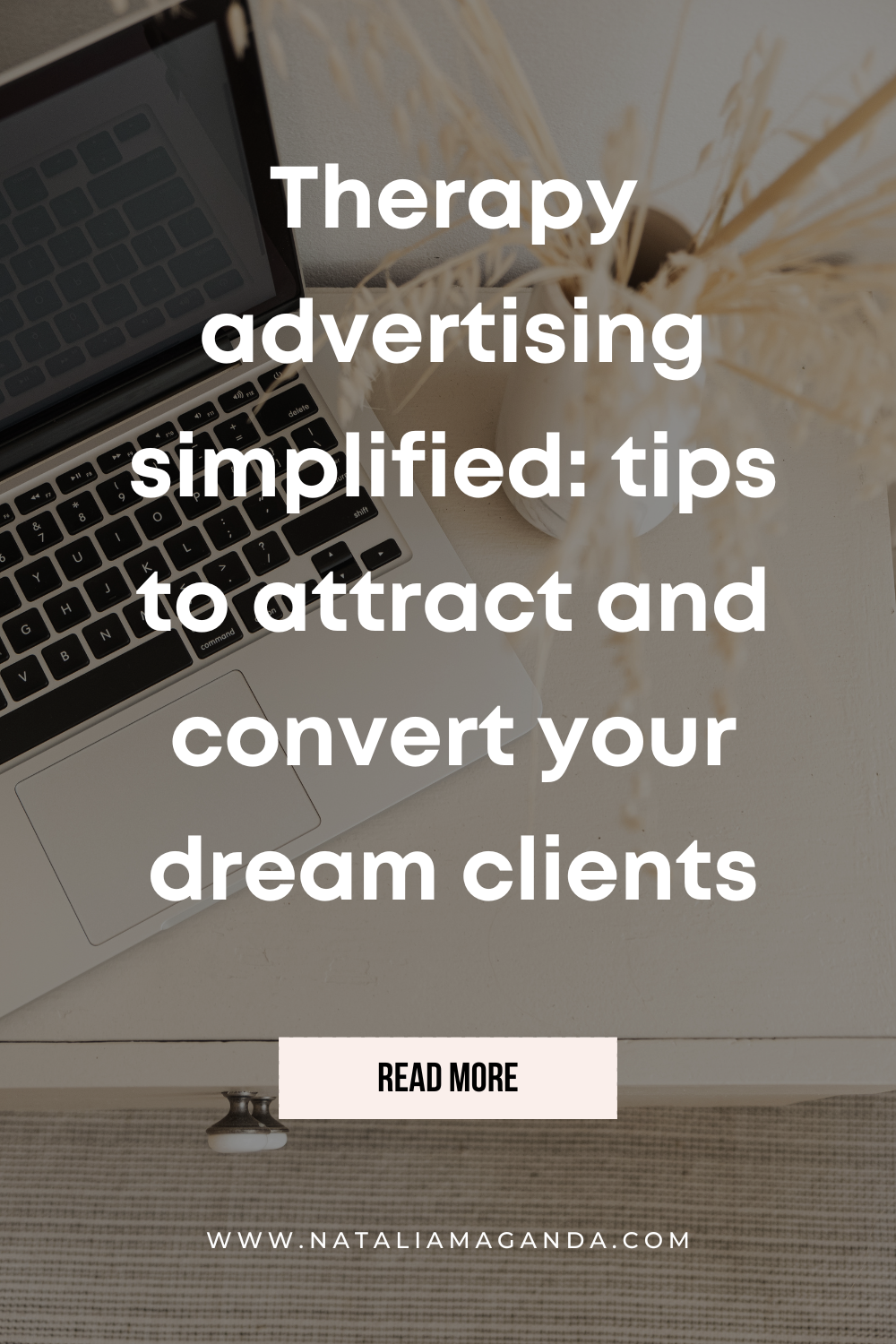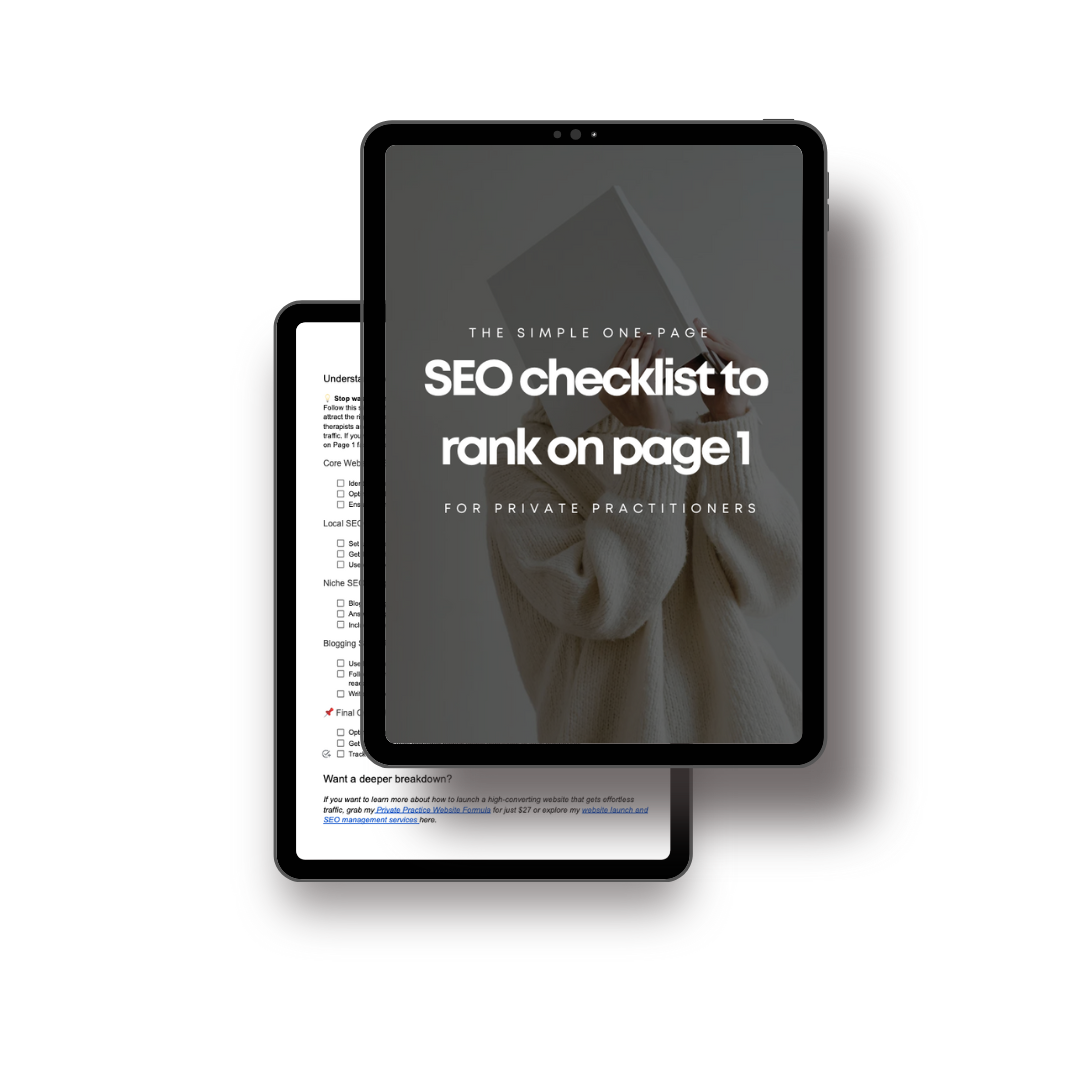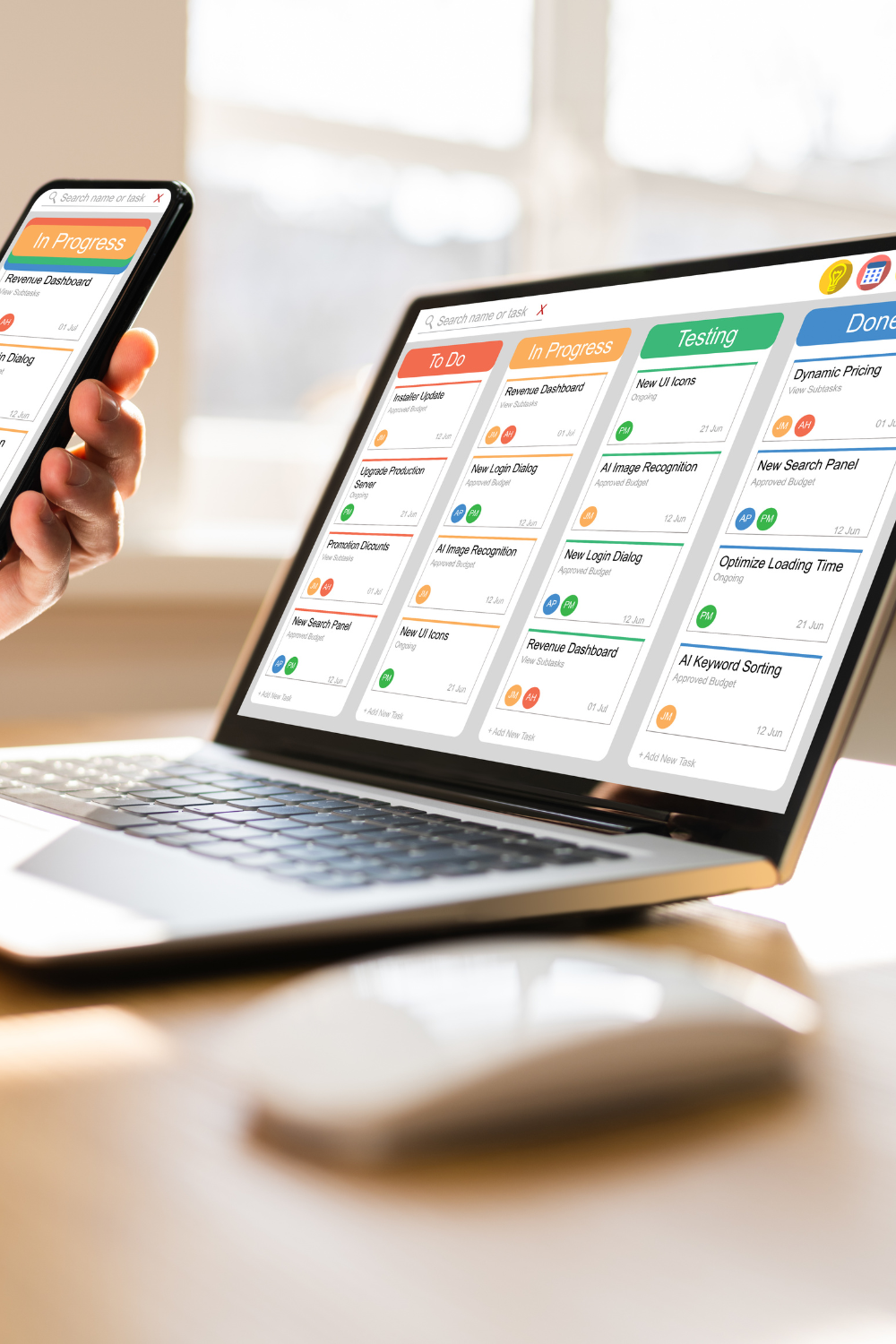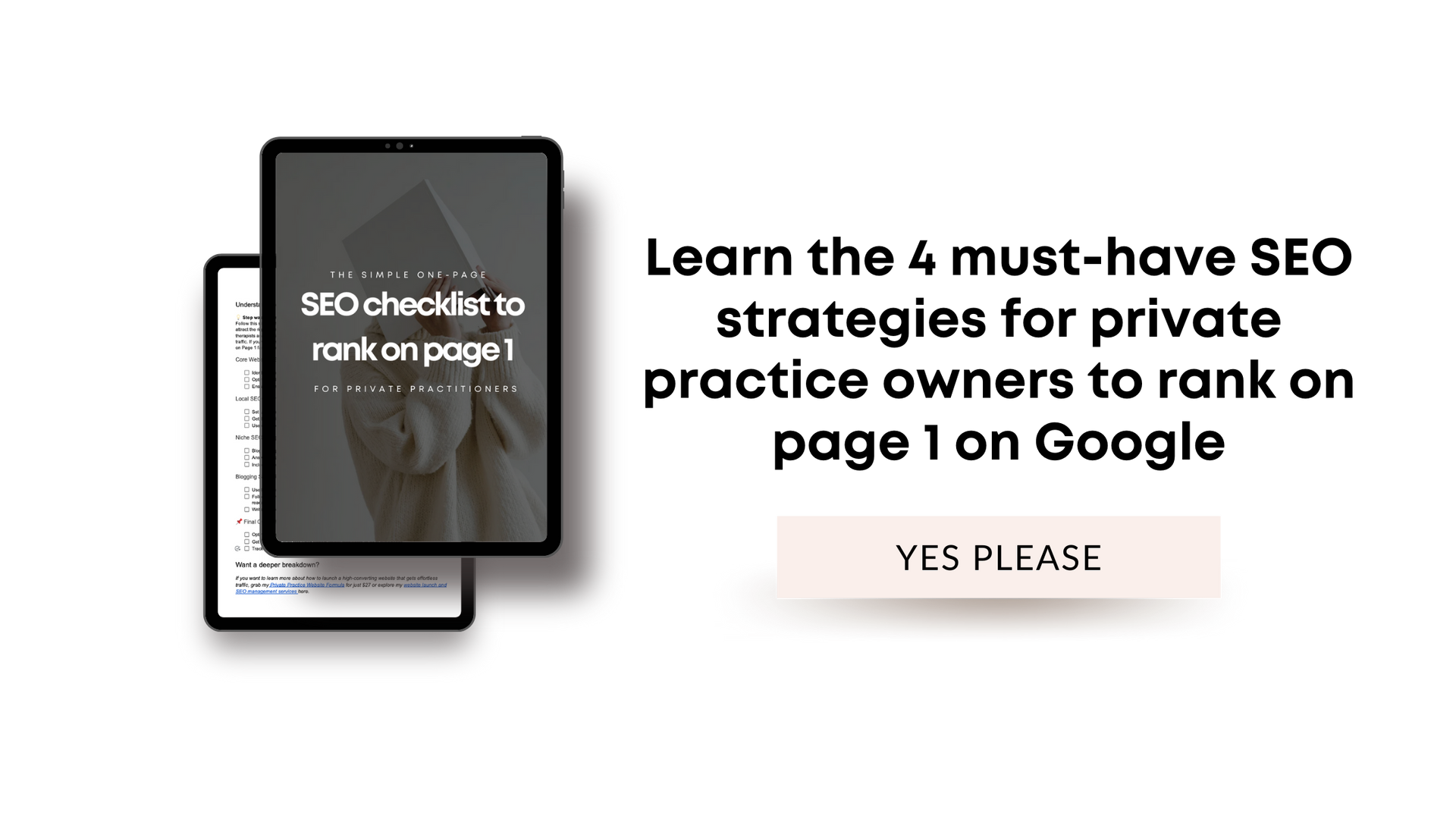Therapy advertising simplified: build trust and grow with the right strategy and website
Imagine this
You’ve built a thriving private practice, changing lives one session at a time. But when it comes to attracting new clients, things feel... stuck. You’ve tried social media posts, word of mouth, and even a few DIY ads, yet the results are inconsistent at best. Here’s the truth: advertising as a therapist doesn’t have to feel scattered or salesy. The secret lies in a strategic website that works as hard as you do—drawing in your dream clients while you focus on what you love.
Hi, I’m Natalia Maganda, a website designer for therapists. I help private practice professionals simplify their marketing and grow their practices through websites that do the heavy lifting for them. If you’ve ever wondered how to advertise effectively, this guide will show you why your website is the cornerstone of your strategy and how to make it work for you.
Why your website is your most powerful advertising tool
Turning visitors into clients
Think of your website as the foundation of your entire marketing strategy. It’s not just a digital brochure—it’s your best tool for converting visitors into clients. Imagine a potential client landing on your page after searching for a therapist. They’re greeted with a calming design, clear descriptions of your services, and a simple way to book an appointment. This seamless experience builds trust and encourages action.
When your website speaks directly to their concerns, it becomes more than a site—it becomes the starting point of their healing journey.
Making social media and ads work harder
Social media and paid ads are great for visibility, but they’re most effective when they lead potential clients to a professional, user-friendly website. Without this step, you risk losing potential clients to distractions or doubt.
Think about this: someone clicks on your ad while scrolling through Instagram. If the ad takes them to a cluttered or uninformative page, they’re likely to move on. But if it directs them to a clean, inviting website with answers to their questions and easy next steps, you’ve gained their trust. Your website ties it all together, providing a trusted, informative space that converts interest into action.
The basics of therapy advertising
Understanding the role of ads
Advertising connects you with clients who are already looking for help. Picture a potential client typing “therapist near me” into Google at 10 PM, feeling overwhelmed and seeking answers. A targeted Google Ad brings them directly to your website, where they find the reassurance they need to take the next step.
Whether it’s a Google Ad or a social media campaign, the ultimate goal is to guide potential clients to your website—a space designed to convert curiosity into confidence.
Crafting your message
Your advertising message should focus on empathy and solutions. Speak directly to your ideal client’s struggles. For example, instead of saying “Professional therapy services available,” try something like, “Struggling with anxiety? Let’s work together to find peace.”
By creating ads that reflect the tone and solutions your website provides, you create a consistent, trustworthy experience from the first click to the final decision to book.
Best platforms for therapy advertising
Google ads: where clients are actively searching
Google Ads let you show up when potential clients are actively searching for help. With the right keywords, you can drive targeted traffic directly to your website, increasing the chances of conversion. For example, using phrases like “therapist for anxiety near me” or “grief counseling in [your city]” helps you connect with people who are ready to act.
Facebook & Instagram: building trust through connection
These platforms are perfect for showcasing your personality and creating a sense of trust. Share relatable content, such as “a day in the life” posts, client success stories (with permission), or quick videos addressing common struggles. Use ads to amplify this content and lead viewers to a dedicated landing page on your website.
Therapist directories: elevating your website’s visibility
Listing on directories like Psychology Today not only makes you easier to find but also allows you to link back to your website. Ensure your profile highlights your unique approach and includes a call to action that encourages readers to visit your site to learn more or schedule a consultation.
How to build an advertising strategy around your website
Designing landing pages that convert
Create dedicated landing pages for your ads, tailored to the message or service you’re promoting. These pages should be clear, focused, and guide visitors toward taking the next step, like booking a consultation. For example, if your ad targets anxiety relief, the landing page should immediately address anxiety-related concerns and offer specific ways you can help.
Using blog content to support campaigns
Blogs are a fantastic way to answer common client questions and showcase your expertise. For example, a blog titled “5 Simple Ways to Manage Stress” can be promoted through ads and linked to a call-to-action encouraging readers to book a session with you.
This approach not only provides immediate value but also builds trust, increasing the likelihood of conversion.
Tracking leads and success through website metrics
Your website’s analytics can show you which ads are working and where clients are coming from. Use tools like Google Analytics to monitor traffic sources, bounce rates, and conversion paths. This data allows you to adjust your strategy, ensuring your efforts are focused on what drives the best results.
Free and organic advertising ideas for therapists
Leverage blogging and SEO
Write blogs that answer your ideal clients’ questions. For example, a post on “How to Recognize Burnout” not only provides value but also ranks for keywords your audience searches for. With the right SEO strategy, these posts can bring consistent traffic to your website without spending a dime on ads.
Collaborate locally
Partner with local businesses, wellness centers, or yoga studios to cross-promote services. Imagine co-hosting a workshop on mindfulness with a yoga studio, with both of you promoting the event. Include your website link on all promotional materials, driving attendees to learn more about your services.
Offer free webinars or downloads
Create a free resource, like a stress-management guide or a webinar on coping with grief. These can be featured on your website and promoted through social media or email campaigns. Not only do they provide value, but they also bring people to your site, where they can explore your services further.
Ready to simplify your therapy advertising?
Your website is more than just a digital presence—it’s the foundation of your marketing success. A strategic website doesn’t just attract visitors; it turns them into loyal clients who trust your expertise. By combining effective advertising with a user-friendly site, you’re setting your practice up for sustainable growth. Ready to take the next step? Launch your private practice website today!
Related reads
- The ultimate guide to branding your therapy and private practice
- How to pick a profitable therapy niche and get higher-paying clients
- Boost your visibility with therapy directories
- Blogging basics for therapists and 140 blog post ideas

* AI Disclosure: This content may contain sections generated with AI with the purpose of providing you with condensed helpful and relevant content, however all personal opinions are 100% human made as well as the blog post structure, outline and key takeaways.
* Affiliate Disclosure: Some of the links on www.nataliamaganda.com may contain affiliate links meaning that I will get a commission for recommending products at no extra cost to you.

hello! i'm natalia
Latina, web design expert for mental health professionals.
I help ambitious life coaches, therapists and holistic leaders amplify their magic, gain visibility, and simplify their marketing efforts through strategic web design and content.










